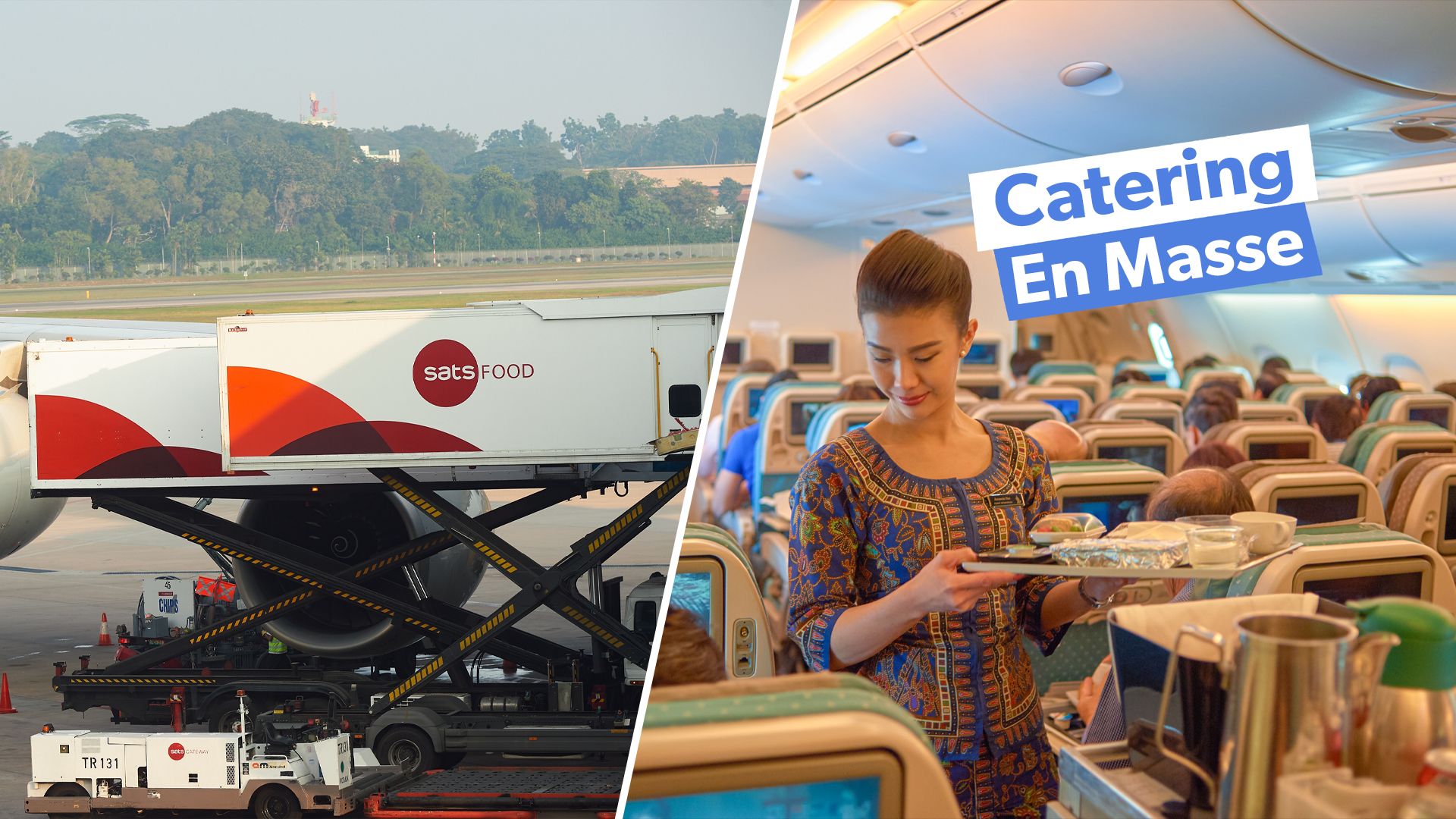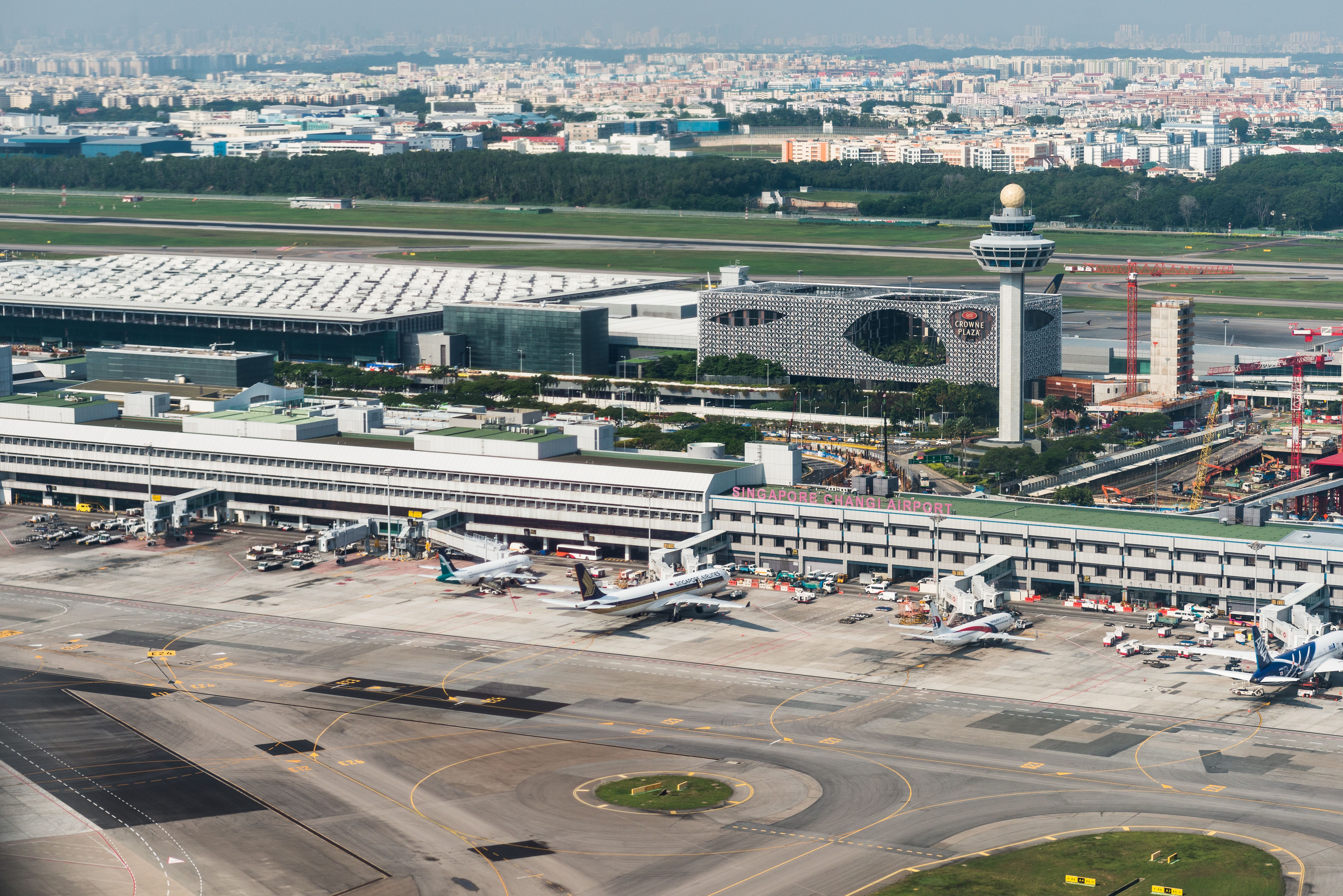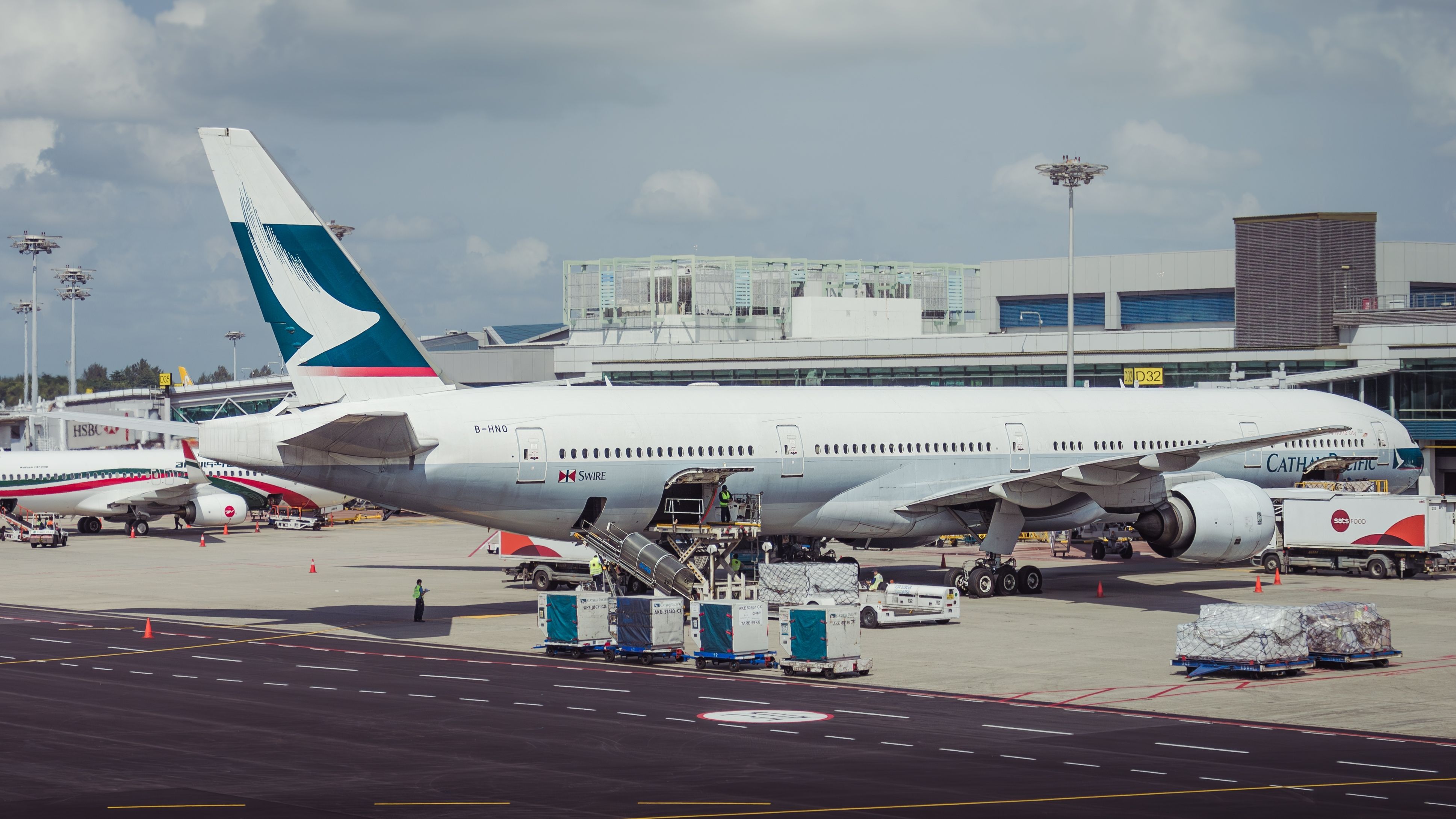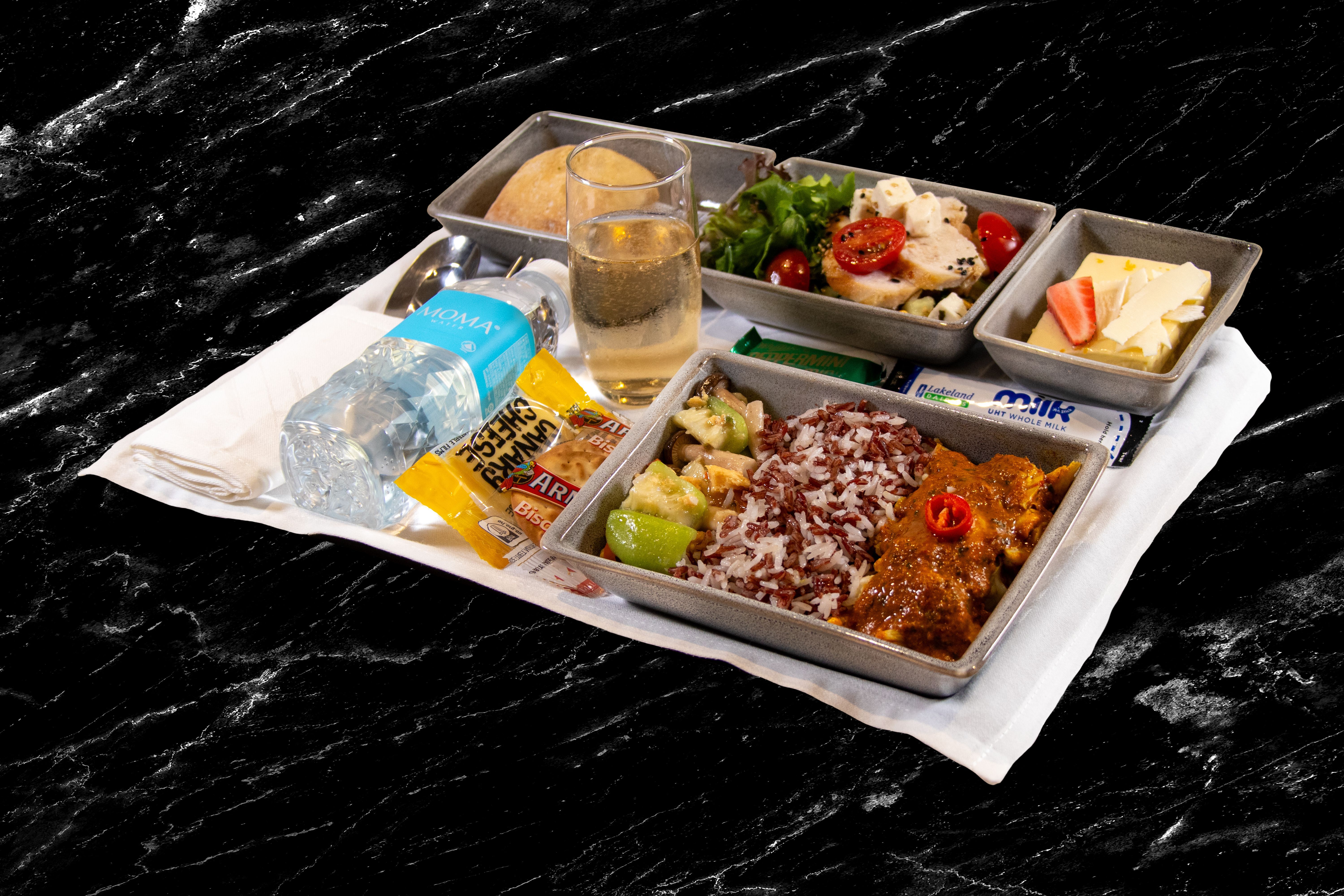Airline food can often be underwhelming. Classic trays with so-so pasta or unseasoned chicken come to mind, and some dishes will be loaded with salt to compensate. However, some airlines consistently rank high on many different reviewer lists, with one of the best being Singapore Airlines.
The flag carrier typically sees around 1.7 million passengers per month and takes great care in preparing tens of thousands of meals each day. Singapore Airlines maintains a vast international network out of Singapore Changi, serving over 75 destinations from its base. But how does the airline manage to serve up enough food for its customers?
Who makes the food?
Much of the work begins at Singapore Changi Airport (SIN), in a tucked-away inflight catering center run by Singapore Airport Terminal Services (SATS). In fact, SATS maintains two catering centers at Changi which are home to over 30 specialized kitchens to cater to airlines with differing culinary needs. SATS prepares food for around 45 airlines, but unsurprisingly, Singapore Airlines is the largest customer.
The catering center has the capacity to handle over 43 million meals per year, amounting to almost 120,000 meals each day. Under expansion plans, the facility aims to process around 53 million meals annually, or 145,000 meals per day, by 2025. It’s a massive facility where meals come together in big batches, and new dishes are always on rotation.
Photo: Superjoseph | Shutterstock
Serving a wide range of destinations across the globe, Singapore Airlines offers different meal options for different regions so that natives and non-Singaporeans alike can enjoy something familiar. And with the carrier rotating new meals every couple of months, the facility has chefs focused on designing menus throughout the year. SATS employs over 1,000 chefs, and there are 800 to 1,000 different menus running on any given day.
The facility handles around 80% of the food flying out of Singapore Changi Airport, and that includes most of the airport’s lounges too. The company is a significant reason behind Changi’s continued success – for those who haven’t visited, Singapore Changi is consistently rated as one of the world’s best airports, serving over 100 airlines.
Food preparation begins
Chefs prepare meals about 24 to 36 hours before takeoff, and operations are similar to a typical restaurant but on an incredible scale. For first and business class, a single chef prepares dozens of filet mignons on a grill simultaneously, cooking them to medium rare so they’re safe for transport and, upon reheating, won’t become too well done.
In another part of the kitchen, gigantic pots, vats, and containers are used for cooking and boiling pasta, rice, sauces, and vegetables. Each gets an individual tank so the chefs can simultaneously make thousands of portions – for example, automated rice-making machines at the facility can handle up to 600kg of rice per hour.
Photo: Vincenzo Pace I Simple Flying
After veggies and carbs are cooked about 55% of the way, for the same reason as the meat, they’re further distributed into large containers, labeled to track any potential foodborne illness onboard, and sent to a blast cooler to halt the cooking process. To make breakfast for economy class, a large, hot, rotating cylinder with 15 pans helps a small team of chefs whip up a minimum of 6,000 omelets daily.
The facility has invested heavily in automation, enabling it to produce meals on such a large scale. This also significantly improves food hygiene and freshness by ensuring meals are delivered just in-time. SATS has also integrated sustainable technology into its operations, including solar panel energy and a commitment to 100% sustainable packaging by 2030, as well as an automated food waste system to help cut down wastage.
Meals are served
Once meal components are ready, workers spread the containers across industrial-sized tables, and the plating process begins. For meals that will stay in the container during the flight, chefs must plate the food, so the presentation is just right. The head chef also provides photos of how the final product should look to flight attendants for quality control in the last minutes of a meal’s journey.
Photo: Jeang Herng | Shutterstock
As a final step, one section of the facility is an assembly line for the food packages, trays, and cutlery, where workers put everything into neat order and into the carts you see onboard. Meals will also pass through scanners to ensure they are free from contaminants before heading to their destined aircraft.
With all that hard work getting the meals ready, all that’s left is for cabin crew to serve them up during the flight. Fortunately, Singapore Airlines has a massive fleet of Airbus A350s, some A380s, and Boeing 787s, all of which fly with the cabin pressurized to around 6,000 feet and feature a higher than average cabin humidity.
Photo: Singapore Airlines
While still well above the average altitude, about the height of Denver, Colorado in the US, it’s an improvement compared to the standard of 8,000 feet. This lower altitude allows Singapore Airlines to prepare meals for the longest flights without adding extra salt, avoiding potential bloating and discomfort.


-Pace.jpeg)

